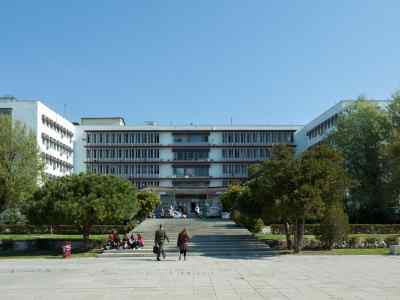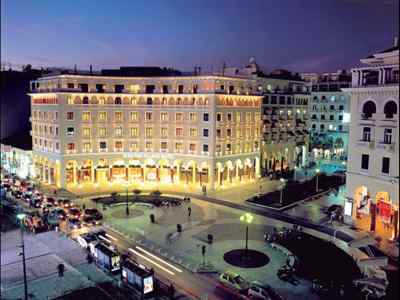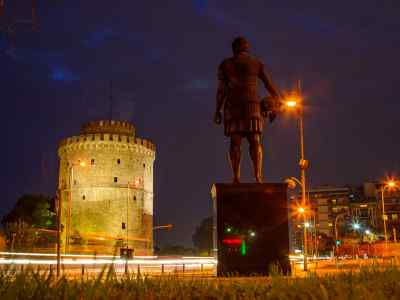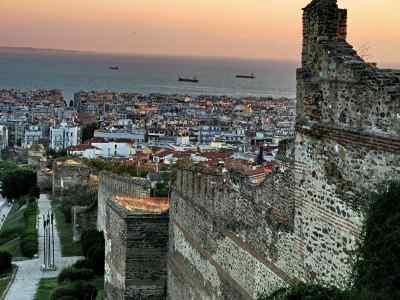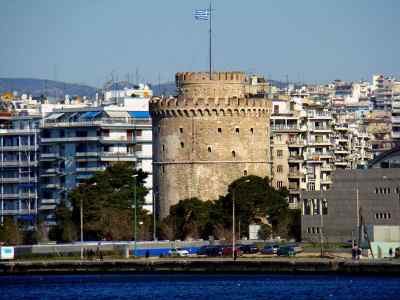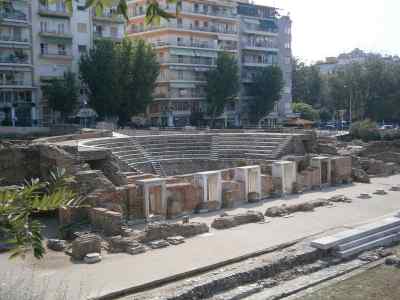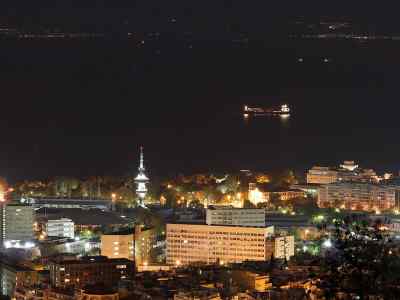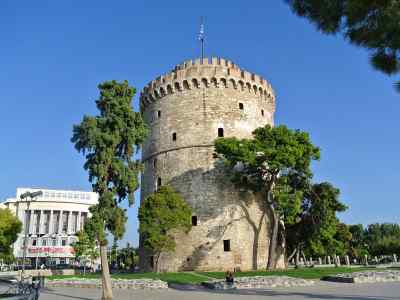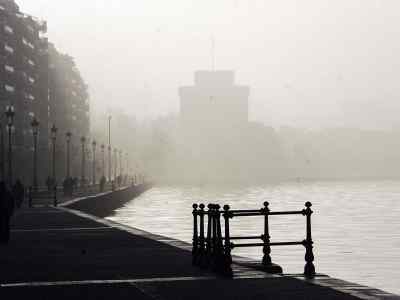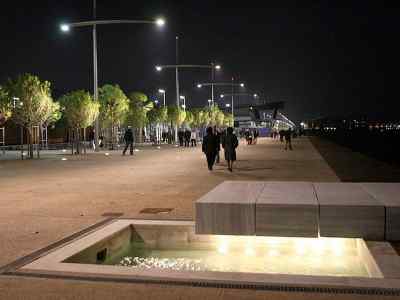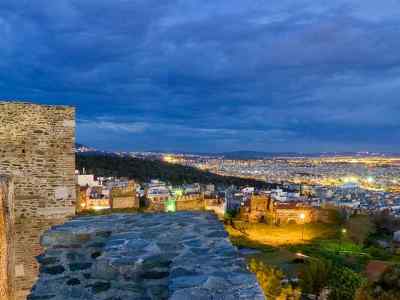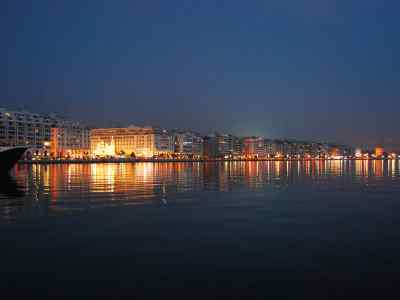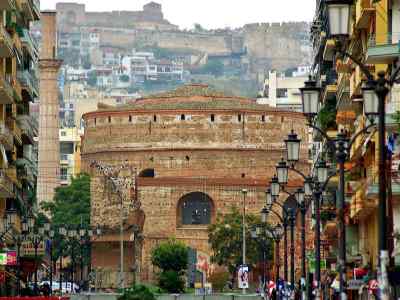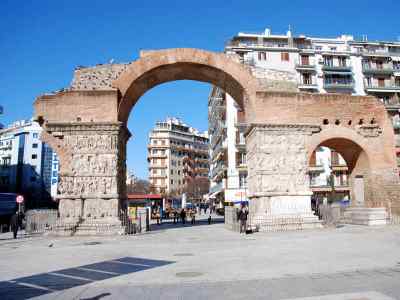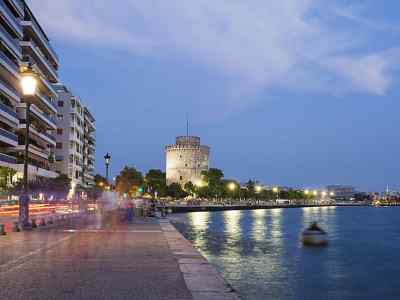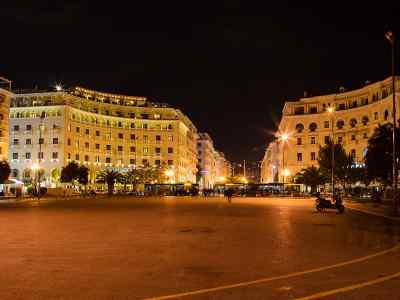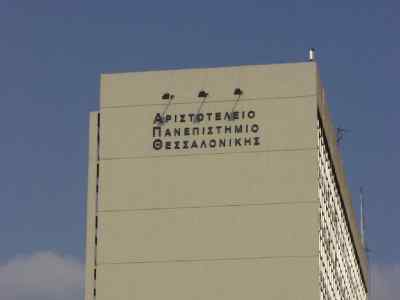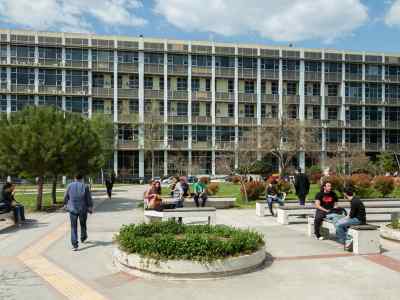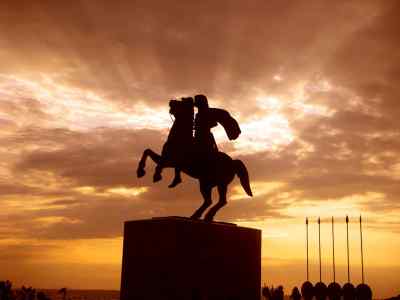About Thessaloniki
Thessaloniki, European Youth Capital 2014
Thessaloniki (520 km. north of Athens) is the second largest city of Greece and the most important centre of the area. Built near the sea (at the back of the Thermaïkos Gulf), it is a modern metropolis bearing the marks of its stormy history and its cosmopolitan character, which give it a special beauty and charm.
Take a tour in the centre of Thessaloniki and plan to visit its nearby destinations. Also, while being in Thessaloniki it is worth going up to Halkidiki.
Visit Thessaloniki's Archaeological sites
- The ancient forum (dated to the late 2nd or the early 3rd century AD) with squares, porticoes, additional buildings and odeum (293-395 AD), the palace complex of Galerius Maximianus (4th c. AD), the thermae, the hippodrome, the temples and other monuments and moveable finds (among them mosaics of exquisite art) brought to light in excavations and surveys. In the south square, is the famous Stoa of the Idols, which was two-storeyed and lavishly decorated.
- The Triumphal Arch of Galerius (Kamara), built in AD 305 to commemorate his military successes in general in the eastern provinces of the Roman Empire.
- The Rotunda is an early 4th century building which later was converted into a Christian church.
Visit Thessaloniki's Byzantine monuments
Thessaloniki, with its host of Byzantine monuments (due to it’s significance during the Byzantine period), justifiably is considered an open-air museum of Byzantine art. Wandering through the city, it is worthwhile to see:
-The churches of Acheiropoietos (5th century) a three-aisled, timber-roofed basilica, the Holy Wisdom of God (Hagia Sophia) (7th century), the Panaghia (Virgin) Chalkeon (1028), Hosios David (12th century), St Panteleemon (late 13th or the early 14th century), is of four-columned cross-in-square type, Ayioi Apostoloi (1310-1314),Taxiarches (14th century), Panagouda a three-aisled basilica with significant icons, Agios Ioannis Prodromos (Nymphaion),Vlatadon monastery a 14th century foundation of which only the katholikon and two cisterns within the precinct survive, Ayios Demetrios a splendid basilica dedicated to the patron saint and protector of the city, etc.
- The byzantine walls of the city
- The archaeological site in 3 Septemvriou St., with remnants of a cemetery basilica, a martyrion and Early Christian graves.
- The byzantine bathhouse (late thirteenth century).
- The Heptapyrgion castle was raised in stages, from the early years of the Byzantine Age into the Ottoman period.
Amazing Ottoman monuments
- The White Tower (15th century), the hallmark of the city.
- The Mosques of the Hamza Bey Cami (15th century), the Aladja Imaret Cami (1484) and the Yeni Cami (1902).
- Hamams (turkish bathhouses): The Pazar Hamam (15th century), the Pasha Hamam (15th century), Bey Hamam (16th century), Yeni Hamam and the Yahudi Hamam.
- Bezesteni, a rectangular building with lead-covered domes and four entraces was built in the late fifteenth century and operated as a cloth market.
Discover neighbourhoods and focal points in the city
- The Old City (Ano Polis), in which many notable examples of Ottoman and traditional Macedonian architecture still stand, alongside humble dwellings put up by the refugees who reached Thessaloniki in droves, after the Greek defeat in Asia Minor, in 1922.
- The historical quarter of the Ladadika. In recent years, a series of interventions to rehabilitate the urban fabric have helped to enhance the Ladadika as a quarter for leisure pursuits.
- The traditional markets: the Modiano, which is housed in a rectangular building of 1922, with pedimented facade and glass roof; the Kapani or Vlalis market; Athonos Square and the ‘Louloudadika’ (literally flower market).
- Vasilissis Olgas Avenue, lined with many representative Neoclassical buildings and examples of late 19thcentury eclectic architecture.
- The central Aristotelous Square, surrounded by monumental buildings and open to the waterfront for a width of 100 metres.
- Other monuments and buildings in the city:
- Mylos (literally mill). An old industrial complex, built in 1924, today have been remodelled to house cultural events and leisure activities, as well as the industrial buildings of the old FIX Brewery and the VILKA plant.
- Lazarist monastery (1886) by the monastic order of the Brothers of Mercy, and now used for cultural events.
- Royal Theatre
- Thessaloniki Concert Hall. A newly-built, magnificent yet austere, multipurpose venue for cultural and other events.
- YMCA Building, a building of 1924, with a mixture of Neocolonial and Byzantesque architectural elements.
Museums
It’s worth seeing the Archaelogical Museum, the Museum of Byzantine Culture, the Folk and Ethnographic Museum, the State Museum of Contemporary Art, the Teloglion Foundation of Art, the Thessaloniki Cinema Museum, the Thessaloniki Science Center and Technology Museum, et. al.
Read more...
Festivities
During each year, Thessaloniki hosts significant cultural and commercial festivities, such as the Thessaloniki International Fair (every September), the International Thessaloniki Film Festival (every November) and the International Book Fair (every May).
More moving around the city: http://www.oasth.gr/index_eng.php
City of Thessaloniki official webpage
Source: http://www.visitgreece.gr/en/main_cities/thessaloniki
